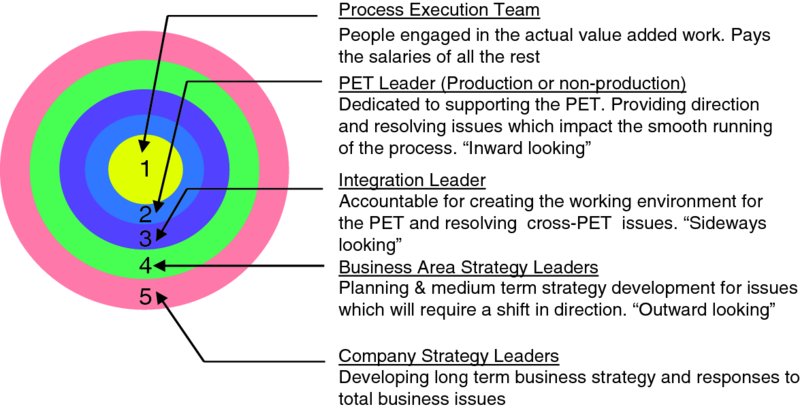5 Organising for Lean
We spoke earlier of the need to organise around your desired outcomes and the problems associated with this. In this chapter we will explore this a bit more and propose a model which can overcome some of the issues. This is not the only possible model, and you need to figure out for yourself what the right solution is for your business and your culture. There is no real right or wrong here (except that a traditional, purely functional organisation is probably wrong!).
Turning tradition upside down
When people first see this model (see Figure 3), they tend to fall into the all-too-familiar hierarchical mindset and see the layers as seniority in a conventional organisational structure. Let me say right off the bat, there is no hierarchy implied in this model, in fact, quite the reverse. The layers refer to roles, not rank. And all are dedicated to supporting the process execution team either directly or indirectly as they are the ones who are creating the value for the customer, for which the customer is prepared to pay, and which in turn pays for everyone's salary in the end.

Figure 3 Layer Organisation Model
What this is trying to say is that the people who create the value should be the centre of the universe for a business and the traditional boss–subordinate hierarchy should take a back seat. Let's take a look at the roles in a bit more detail. ...
Get The Lean Book of Lean now with the O’Reilly learning platform.
O’Reilly members experience books, live events, courses curated by job role, and more from O’Reilly and nearly 200 top publishers.

